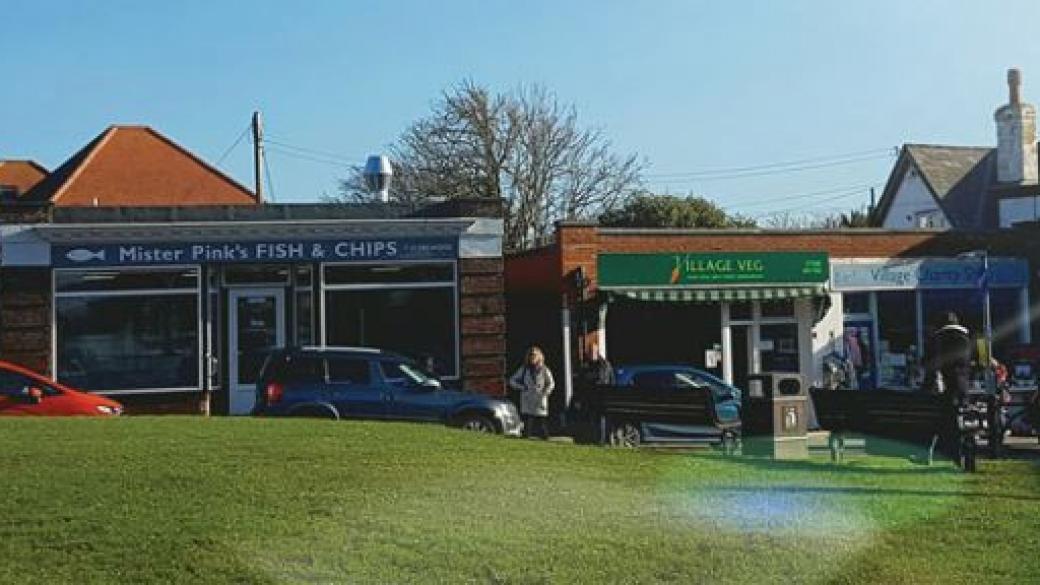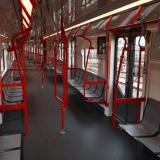The picturesque village of Milford on Sea
One of the very few remaining seaside villages in Hampshire offers breathtaking views and a variety of recreational opportunities

Surrounded by the New Forest on one side and Christchurch Harbour on the other, the picturesque Milford on Sea is one of the very few remaining seaside villages in Hampshire, South England. The village is unspoiled, protected from further development by a surrounding green belt of land.
The most stunning
views from Milford are along the coast. The Needles of the Isle of Wight are clearly visible
from the beach on most days and to
the west on a clear night, the conurbation of Christchurch, Bournemouth
and Poole can be seen along with
the stars reflecting on the English Channel.
The fishing village Keyhaven,
with its active port and bird sanctuary, is slightly further east and
southwards from there is Hurst Spit - two miles of shingle promontory, at the
end of which in 1544 Henry VIII built Hurst castle to defend the Solent.
Milford on Sea began as a Saxon settlement somewhere in the mid-6th
century and in 1086 it had about 50 inhabitants and comprised a small manor
with a church and a mill. The village belonged to Christchurch Priory from circa 1107 to 1539 and then passed
variously into the hands of courtiers and city merchants.
Its main resources were agriculture and seasonal production of
sea-salt, which were later supplemented by smuggling,
which flourished due to its ideal
proximity to the coast and forest. The village development progressed slowly until, in the latter part of
the 18th c., some wealthy newcomers moved in to buy up farms and
build fancy Georgian houses that can still be seen today. Тhe salterns, on the other hand, faded away
and the salt production stopped after 1800.
Until the late
19th c., Milford was а small
hamlet of thatched cottages along the High Street. Little development took place until the 1886, when the
local landowner decided to convert Milford into a premier seaside resort, adding
"on Sea" to the village name. Unfortunately, his
attempt failed due to lack of capital and an outbreak of typhoid, which kept
potential purchasers away.
Despite of the recent development
that turned the village into a local centre as well as a popular destination
for day-trippers headed for the beach, Milford, which presently has a
population of 4,700, has carefully preserved its unique character.
The village boasts a variety of shops - from fishmongers, butchers, greengrocers, model shop, chemist, mini supermarkets to antique shops, art shop, hairdressers, mini spa, florist and clothes shops. It offers a wide range of places to eat and relax - pubs, a creperie, fish and chip shop, Indian, Thai and Italian restaurants, fine dining places and many cosy tearooms throughout the village where you can treat yourself to homemade cakes, tea or coffee. Or you can just relax on a bench in the beautiful Village Green in the centre.
While in Milford, you should definitely visit the Norman parish church
of All Saints. It was built of timber around 1080 and rebuilt in stone in the 12th
Century. The church has 8 bells,
hung in 1928, called Faith, Hope, Love, Peace, Joy, Liberty, Patience and
Victory. Тhe legend
has it that the window on the south side was used to smuggle beer in for the
bell ringers.
A short stroll
from the village centre will take you to Hurst Road Beach – an idyllic family
friendly beach. The beachfront is lined with beach huts and offers
splendid views of the Isle of Wight. If you wish to grab some food, you can
visit The Needles Eye Cafe located on the promenade or the Marine Cafe bar
& restaurant at the end of the beach. To the west of Hurst Road Beach you will find another
beautiful shingle beach - Hordle Cliffs, known for its colourful beach huts. The beaches at Milford on Sea are mainly pebble and
shingle with patches of sand at low tide.
From the west end of the village
centre you can go to The Pleasure Grounds - 14 acres of ancient woodland with a
network of footpaths along the Danes Stream. Legend has it that the Saxons once
fought a fierce battle against the Danes nearby, and every year on the
anniversary of the battle the water turns red.
There are two nature reserves of
great importance near Milflord on Sea. One is Sturt Pond and Keyhaven Marshes
Nature Reserve - home to swans, ducks, Canada geese and many other birds. The
other is called Keyhaven & Pennington Marshes Wildlife Reserve and is one
of the best bird watching spots in Hampshire. The saltmarshes and mudflats
support an internationally important numbers of birds and colourful plants. Centuries
ago this area was used for salt production. Pans were formed by building
rudimentary sea walls on the mudflats and salt water was allowed in and left to
partially evaporate. Complete drying was done in boiling vats.
Another place worth a visit is Keyhaven
Harbour - one of the most beautiful harbours on the Solent. It is well shielded
by Hurst Spit and is home to many fishing boats, small yachts and dinghies. After strolling around the harbour area, you can have lunch at the Gun Inn pub or take the Hurst
Ferry to the castle from Keyhaven Harbour Quay.
Hurst Spit is probably
the most spectacular coastal walk, offering 180 degree
views of the local marshes, Nature Reserve and Isle of
Wight. It is a shingle bank which extends 2.5km from the end of Milford beach
out into the Solent and to Hurst Castle and lighthouse. The spit is also an
important coastal defence, protecting the Western Solent from flooding.
At the very end of the Hurst Spit is the Hurst Castle, which can be
reached either by a long walk along the spit, or by ferry. Built by Henry VIII in
1544 as one of a chain of coastal fortresses, it had a
perfect location to defend the western approach to the Solent. Charles I was
imprisoned here in 1648 before being taken to London to his execution. The
castle was modernised during the Napoleonic wars and once more in the 1870’s
when the huge armoured wings were constructed. Presently, the castle is opened
to the public and has a number of exhibits, including two 38-ton guns in their
casemates and its very own garrison theatre. The panoramic views across the Solent to the Isle of Wight from the
top of the centre keep are spectacular. Next to the castle you will find the Hurst
Point Lighthouse, which guides vessels through the dangerous western approaches
to the Solent.
Despite its small size, Milford on Sea boasts beautiful beaches, stunning
sea views, vibrant village life, fantastic shops,
breath-taking nature reserves, splendid forest, a whole lot of pubs, bistros,
cafes, gourmet restaurants and a wide range of places to go and things to do
and see. The village has an amazing community centre, offering
a huge array of activities for people from all
ages - cinema, workshops, classes, yoga and theatre, to mention but a few.
Milford-based Annie
Corder-Mills shares some of her local favourites:
·
The
best coffee in the village is served at Hurst on the Hill café.
· The Wash House bar offers the best selection of local traditional ales to choose from.
· The loveliest oldie looking pub in Milford on Sea is The Smugglers Inn.














